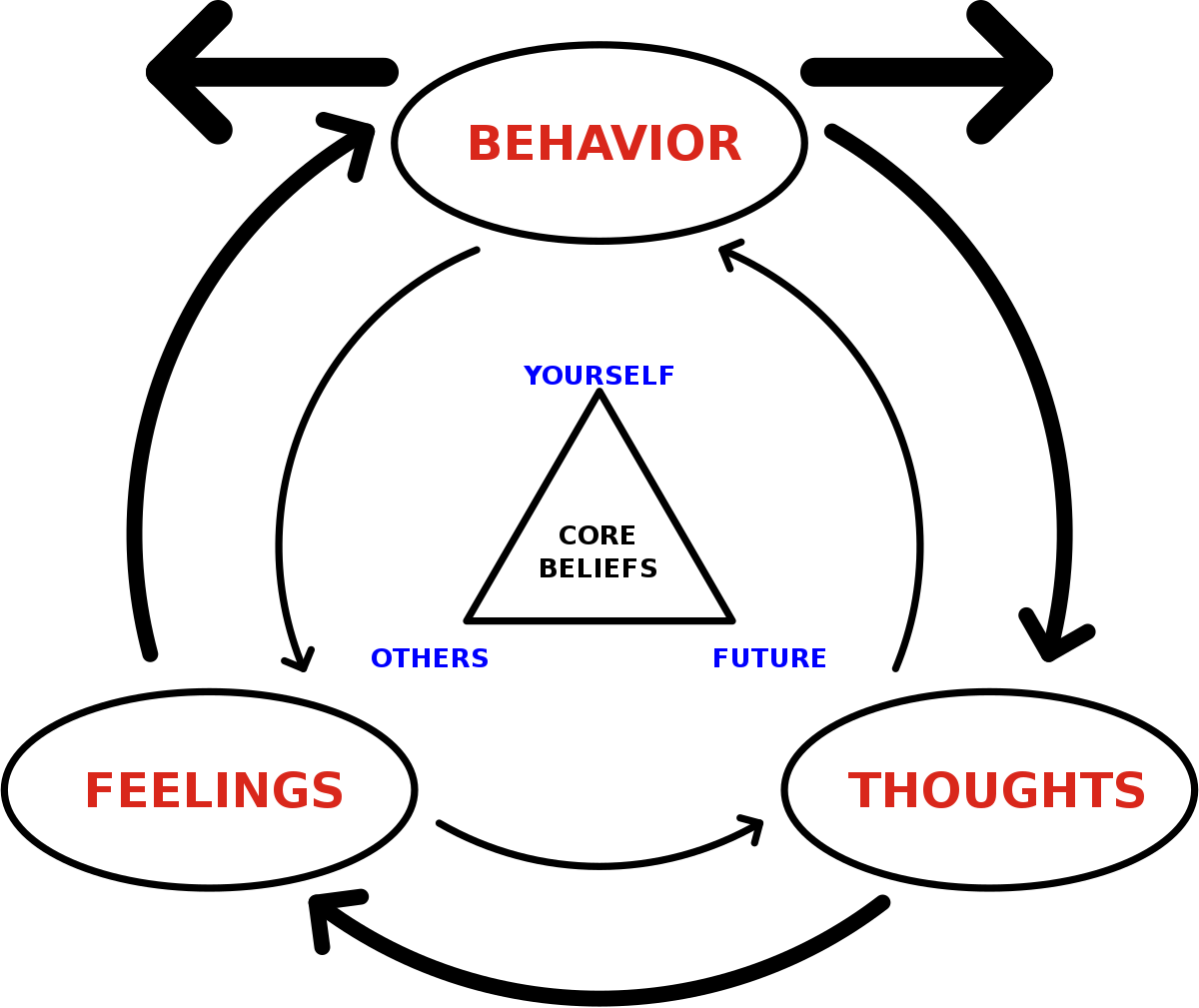Cognitive behavioral therapy, or CBT, is a common form of talk therapy. Unlike some other therapies, CBT is typically intended as a short-term treatment, applied for a few weeks to a few months.
Although the past is certainly relevant, CBT focuses on providing you with tools to solve your current problems. And there are a lot of ways to get there with this type of therapy.
What techniques are used with CBT?
The key principle behind CBT is that your thought patterns affect your emotions, which, in turn, can affect your behaviors.
For instance, CBT highlights how negative thoughts can lead to negative feelings and actions. But, if you reframe your thoughts in a more positive way, it can lead to more positive feelings and helpful behaviors.
Your therapist will teach you how to make changes you can implement right now. These are skills you can continue to use for the rest of your life.
Depending on the issue you’re dealing with and your goals, there are several ways to approach CBT. Whatever approach your therapist takes, they would include:
identifying specific problems or issues in your daily life,
becoming aware of unproductive thought patterns and how they can impact your life,
identifying negative thinking and reshaping it in a way that changes how you feel,
learning new behaviors and putting them into practice.
After speaking with you and learning more about the issue that you need help with, your therapist will decide on the best CBT strategies to use.
Some of the techniques that are most often used with CBT include the following 9 strategies:
- Cognitive restructuring or reframing
This involves taking a hard look at negative thought patterns.
Perhaps you tend to over-generalize, assume the worst will happen, or place far too much importance on minor details. Thinking this way can affect what you do and it can even become a self-fulfilling prophecy.
Your therapist will ask about your thought process in certain situations so you can identify negative patterns. Once you’re aware of them, you can learn how to reframe those thoughts so they’re more positive and productive.
For example: “I blew the report because I’m totally useless” can become “That report wasn’t my best work, but I’m a valuable employee and I contribute in many ways.”
- Exposure therapy
Exposure therapy can be used to confront fears and phobias. The therapist will slowly expose you to the things that provoke fear or anxiety, while providing guidance on how to cope with them in the moment.
This can be done in small increments. Eventually, exposure can make you feel less vulnerable and more confident in your coping abilities.
- Journaling and thought records
Writing is a time-honored way of getting in touch with your own thoughts.
Your therapist may ask you to list negative thoughts that occurred to you between sessions, as well as positive thoughts you can choose instead.
Another writing exercise is to keep track of the new thoughts and new behaviors you put into practice since the last session. Putting it in writing can help you see how far you’ve come.
- Activity scheduling and behavior activation
If there’s an activity you tend to put off or avoid due to fear or anxiety, getting it on your calendar can help. Once the burden of decision is gone, you may be more likely to follow through.
Activity scheduling can help establish good habits and provide ample opportunity to put what you’ve learned into practice.
5.Behavioral experiments
Behavioral experiments are typically used for anxiety disorders that involve catastrophic thinking.
Before embarking on a task that normally makes you anxious, you’ll be asked to predict what will happen. Later, you’ll talk about whether the prediction came true.
Over time, you may start to see that the predicted catastrophe is actually not very likely to happen. You’ll likely start with lower-anxiety tasks and build up from there.
6. Relaxation and stress reduction techniques
In CBT, you may be taught some progressive relaxation techniques, such as:
deep breathing exercises,
muscle relaxation,
imagery,
You’ll learn practical skills to help lower stress and increase your sense of control. This can be helpful in dealing with phobias, social anxieties, and other stressors.
